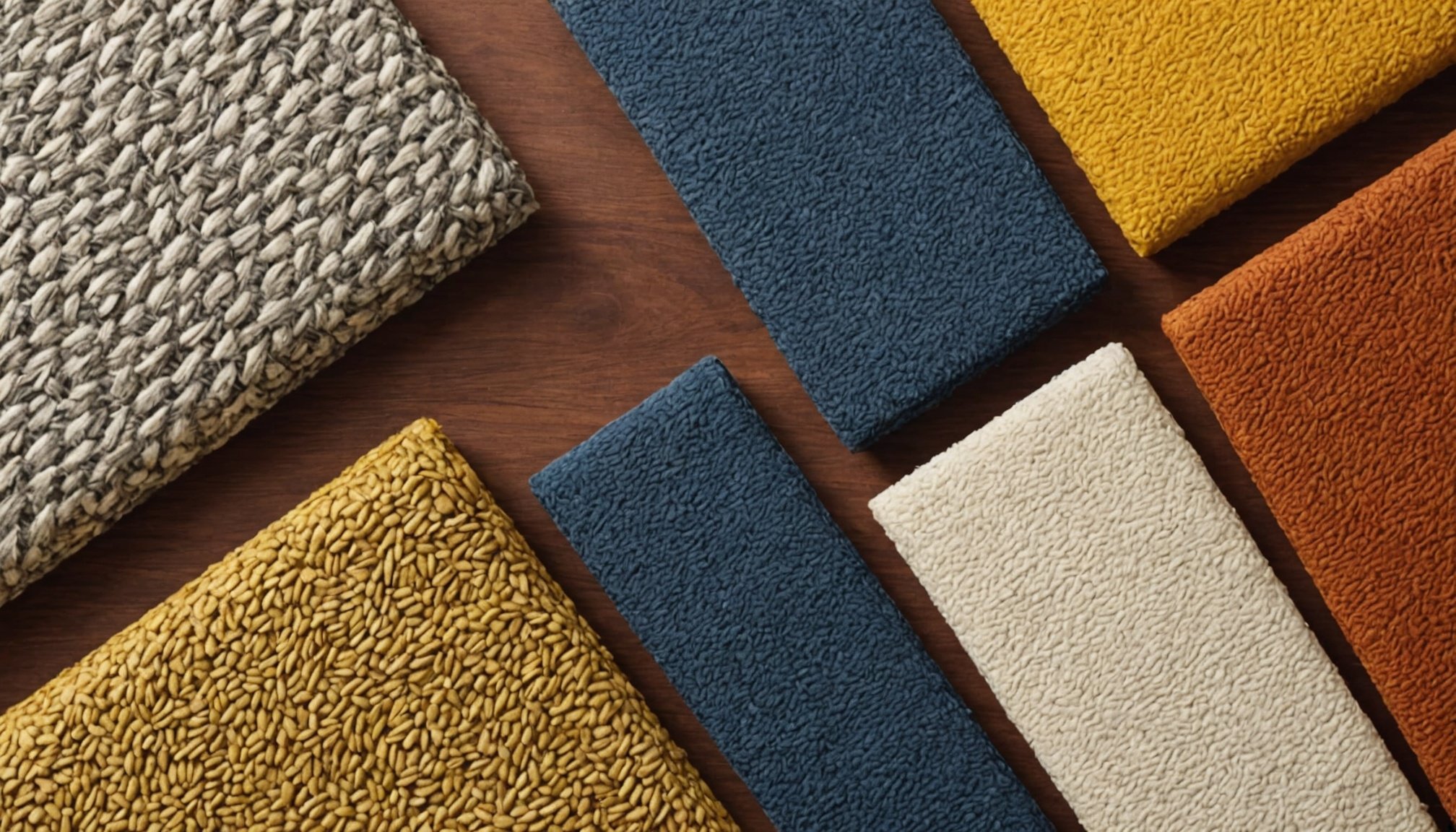In the world of interior design, the art of mixing textures and patterns plays a pivotal role in crafting spaces that radiate personality and depth. As we navigate through the nuances of design in 2024, it becomes essential to utilize every element at our disposal to create a harmonious and cohesive environment. Whether you’re revamping your living room or bringing a fresh look to your office, understanding how to blend different elements can transform your space into a masterpiece. Through this article, we’ll explore actionable insights and expert tips to help you design with confidence, ensuring every room tells a story of its own.
Understanding the Basics of Texture and Pattern
Textures and patterns are the building blocks of any well-designed room. They add layers and depth, bringing interest and dynamism to a space that might otherwise feel flat or uninspired. But what exactly are textures and patterns, and how do they influence interior design?
In parallel : What styling tricks can help you appear taller and leaner in your outfits?
Texture refers to the surface quality of materials used in design. It can be soft, rough, silky, or even gritty, affecting how a room feels visually and tactilely. Imagine a plush velvet sofa paired with a sleek metal coffee table – the contrast in materials adds both visual and tactile intrigue.
On the other hand, patterns are the repeated designs or motifs on surfaces, such as textiles, wallpapers, or tiles. Patterns can range from subtle to bold, depending on their complexity and color. A room with a monochromatic color scheme can come alive with the introduction of a geometric or floral pattern.
Also read : What trends should you embrace for a chic and sophisticated look this year?
To achieve a cohesive look, it’s crucial to balance both elements effectively. Start by selecting a base texture that aligns with the overall mood you wish to convey. A rustic room might lean towards natural fibers like jute or wool, while a modern space might incorporate glass and polished wood.
Next, introduce patterns that complement your chosen textures. Consider the room’s purpose and the emotions you wish to evoke. For example, cool-toned patterns can instill calm in a bedroom, whereas vibrant, warm patterns might invigorate a living or dining room. The key is to keep the mix balanced, ensuring neither element overwhelms the other.
Creating a Color Palette for Harmony
Color plays a fundamental role in unifying different textures and patterns while ensuring your space remains visually pleasing. A well-thought-out color palette serves as the foundation for a cohesive design, guiding your choices and maintaining balance.
Start by selecting a dominant color that resonates with the room’s intent. This hue will serve as the anchor, around which all other shades revolve. It could be a soft sage for a tranquil setting or a rich navy for a sophisticated ambiance.
Once you’ve designated your primary color, choose complementary and accent colors to enhance visual interest. Complementary colors are those opposite each other on the color wheel, such as orange and blue, creating a vibrant contrast. Accent colors, on the other hand, serve to highlight specific elements and can be as simple as a few shades lighter or darker than your primary hue.
When incorporating patterns, ensure that one or two colors from your palette are consistently present. This repetition helps unify disparate elements, making them feel part of a larger whole. Similarly, textures should reflect your chosen colors, whether through the warm hues of a woven rug or the cool shades of a metallic lamp.
Remember, the key to a cohesive design is balance. Too many colors can make a room appear chaotic, while too few can render it bland. Strive to achieve a harmonious balance by using color to tie together your chosen textures and patterns effectively.
The Art of Layering for Depth and Dimension
A room with a cohesive look is often one that exudes depth and dimension. This is achieved through the art of layering – a technique that involves stacking different design elements to create a rich tapestry of visual interest.
Layering begins with a base layer, often the largest piece of furniture or the main focal point of the room. This could be a plush sectional in the living room or a statement bed in a bedroom. Once your base is set, build upon it with complementary items.
Introduce additional layers through textures and patterns. Start with larger surfaces, like rugs and curtains, then progress to smaller accessories. Consider a soft wool rug as a foundation, topped with a bold-striped sofa throw. Each layer should add an extra dimension, seamlessly blending with the others.
Mix different textures to keep the eye engaged. Pair smooth leather with chunky knits, or juxtapose the sleekness of glass with the rustic quality of aged wood. Not only do these combinations add interest, but they also contribute to the overall cohesive nature of the space.
Patterns, when layered wisely, can also add depth. Experiment with a mix of scales – a large geometric rug contrasted with smaller floral cushions, for instance. This variation ensures that each pattern stands distinct yet within the realm of harmony. Avoid overcrowding with patterns, letting some areas breathe while highlighting others.
Ultimately, your goal is to weave textures and patterns into a narrative that tells the story of the room, offering both visual and physical comfort.
Incorporating Focal Points to Anchor Your Design
Every well-designed space benefits from a focal point – a central element that draws the eye and anchors the room’s design. Focal points are essential in ensuring a cohesive look, providing a clear visual hierarchy that guides the observer through the space.
When selecting a focal point, consider the room’s function and character. In a living room, a fireplace or a large piece of art might serve this purpose, while in a bedroom, it could be a beautifully upholstered headboard.
Once you’ve identified your focal point, use textures and patterns to enhance its prominence. Surround a fireplace with textured tiles or a patterned rug to naturally draw the eye. Similarly, a statement piece of art can be framed by complementary patterns in the surrounding decor, ensuring it remains the centerpiece.
Colors play a pivotal role here as well. Use color contrasts to make your focal point pop – a vibrant painting against a neutral wall or a dark, dramatic wall behind a light-colored bed. These strategies not only emphasize the focal point but also tie together the various design elements within the room.
Additionally, lighting is a subtle yet powerful tool in highlighting focal points. Use strategically placed lamps or spotlights to illuminate these features, ensuring they remain at the forefront of the design narrative.
By incorporating a strong focal point, you give the room a sense of purpose and direction, allowing different textures and patterns to work together in harmony without losing the overall cohesive feel.
Achieving a cohesive look through the use of different textures and patterns is an artful endeavor that balances creativity with structure. By understanding the foundational principles of design, selecting a harmonious color palette, mastering the art of layering, and anchoring your space with a focal point, you can transform any room into a visually captivating haven.
As you embark on your interior design journey, remember that each decision contributes to the overarching narrative of your space. Embrace the contrasts and highlights, allowing your personal style to shine through while maintaining a sense of balance and unity.
Whether you’re reimagining a bustling living room or a serene bedroom, the thoughtful integration of textures and patterns will ensure your space not only looks appealing but also tells a story that resonates with every visitor. With these guiding principles in mind, you’re well-equipped to design spaces that are as dynamic as they are cohesive.











